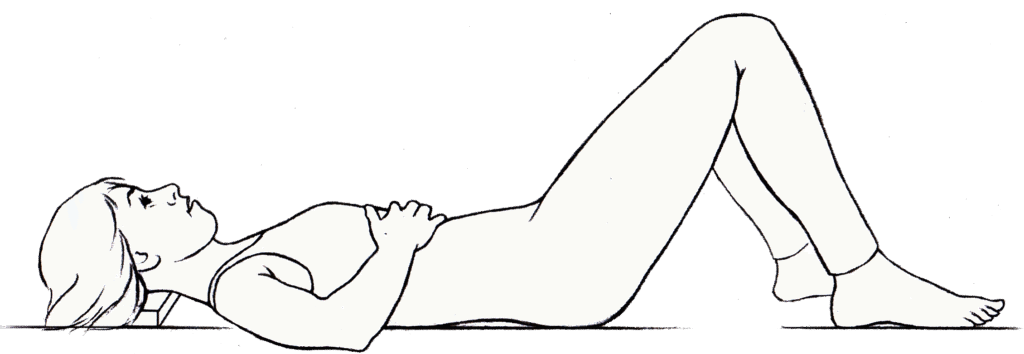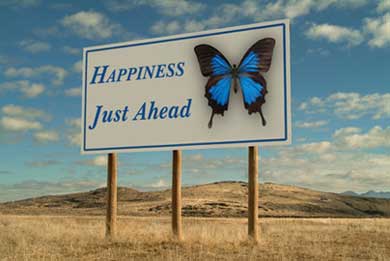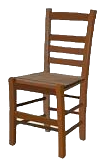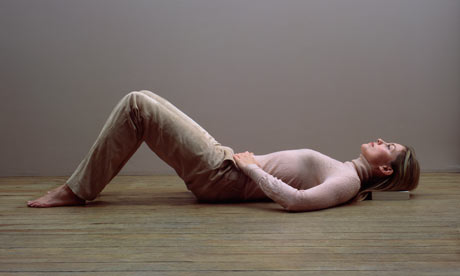Semi-Supine Active or Constructive Rest
Sometimes, the simplest moments carry the deepest wisdom. It is your ability to use perception and open the space always within reach, but over stimulation and overthinking patterns often limit this possibility.
The constructive rest is an exercise that affects the whole system and has both direct and indirect effects on breathing. Lie on your back on a padded yet firm surface for 15 to 20 minutes. Bent knees, with your head resting on some paperback books, will complete the scene. Many people prefer to put a small piece of foam on top of the books, because some heads want a bit of cushioning.


You may wonder what you should do during the Lie-Down or what you should think about to assist gravity and time. For many of us it is very difficult to give ourselves permission to take the time for a daily Lie-Down in the first place, and just putting ourselves on the floor is the first step. Noticing areas of unnecessary tension is easy for some people and difficult for others. Noticing how we come in contact with the floor – evenly or lopsidedly – is informative, but not something to do anything about directly. Those who are generally more flexible may notice things untwisting or releasing just from being in the position. Those who are more tightly wound may not notice anything at first.
As gravity does her job we learn to let it go
Whatever your level of sensitivity, know that by simply letting the position and gravity do their work, several things can happen over time. The neck (top of the spine) gets a gentle bit of traction, and that request for more space between the vertebrae can travel down to the tailbone. The muscles of both the front and the back of the torso can relax, thus allowing the torso to broaden out in coordination with the lengthening of the spine. The third dimension – between the floor and your chest – can also become ess
contracted, providing more internal room for all your organs. Some people use a Lie-Down as a meditation posture.


Leave a Reply